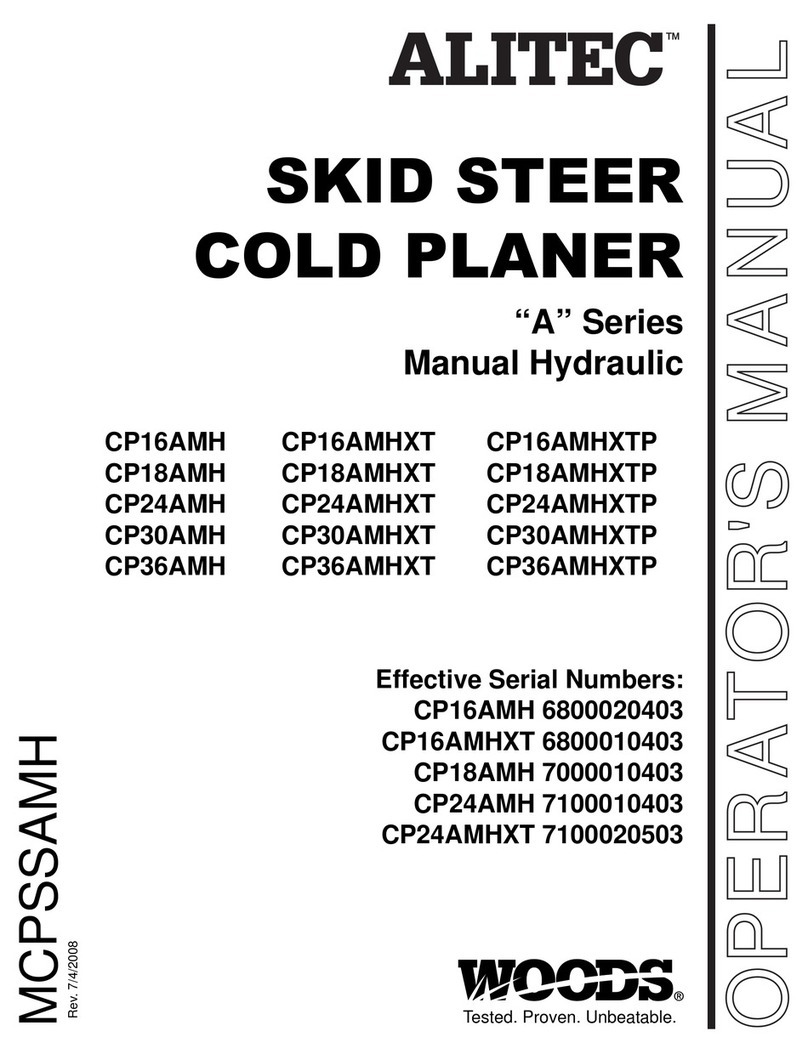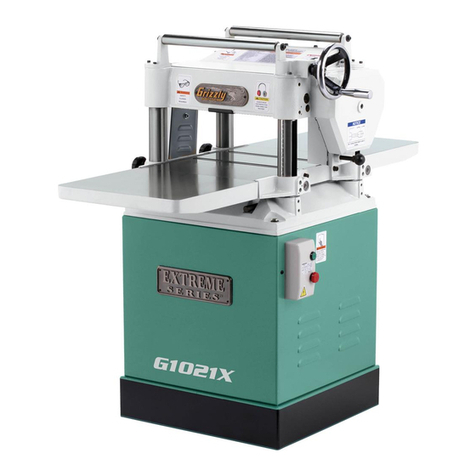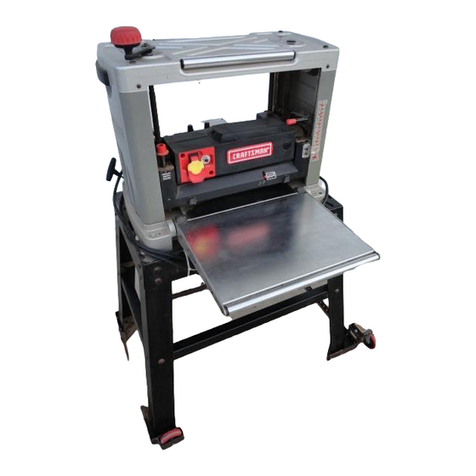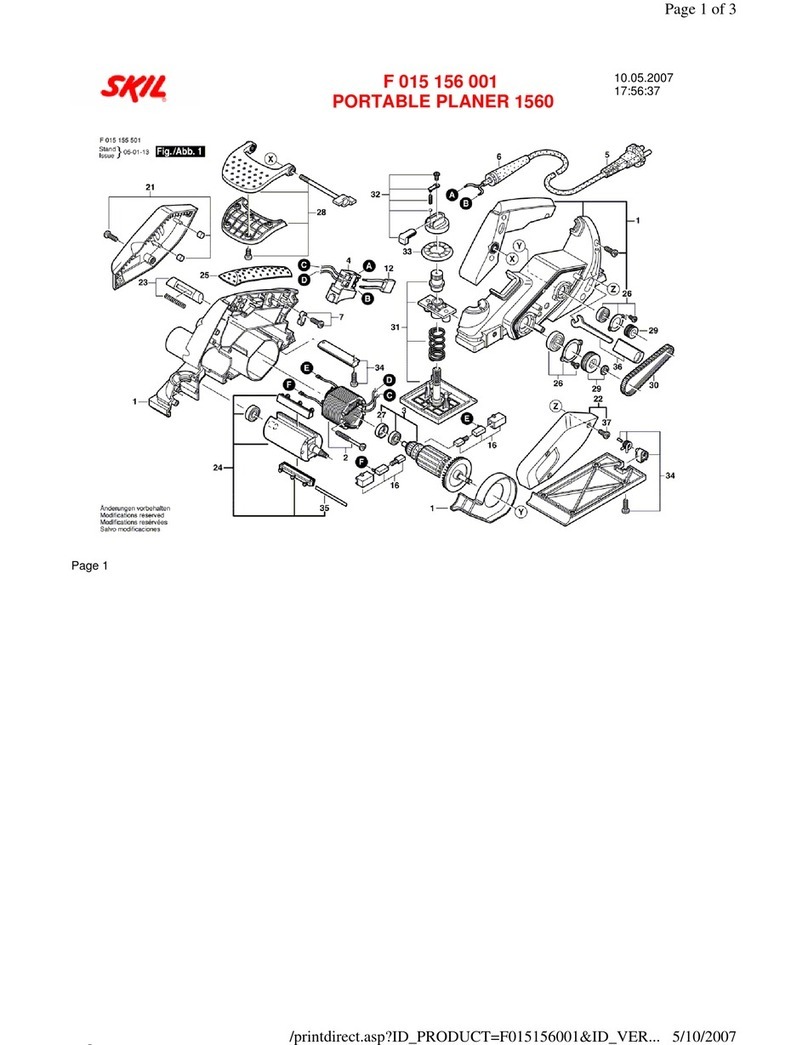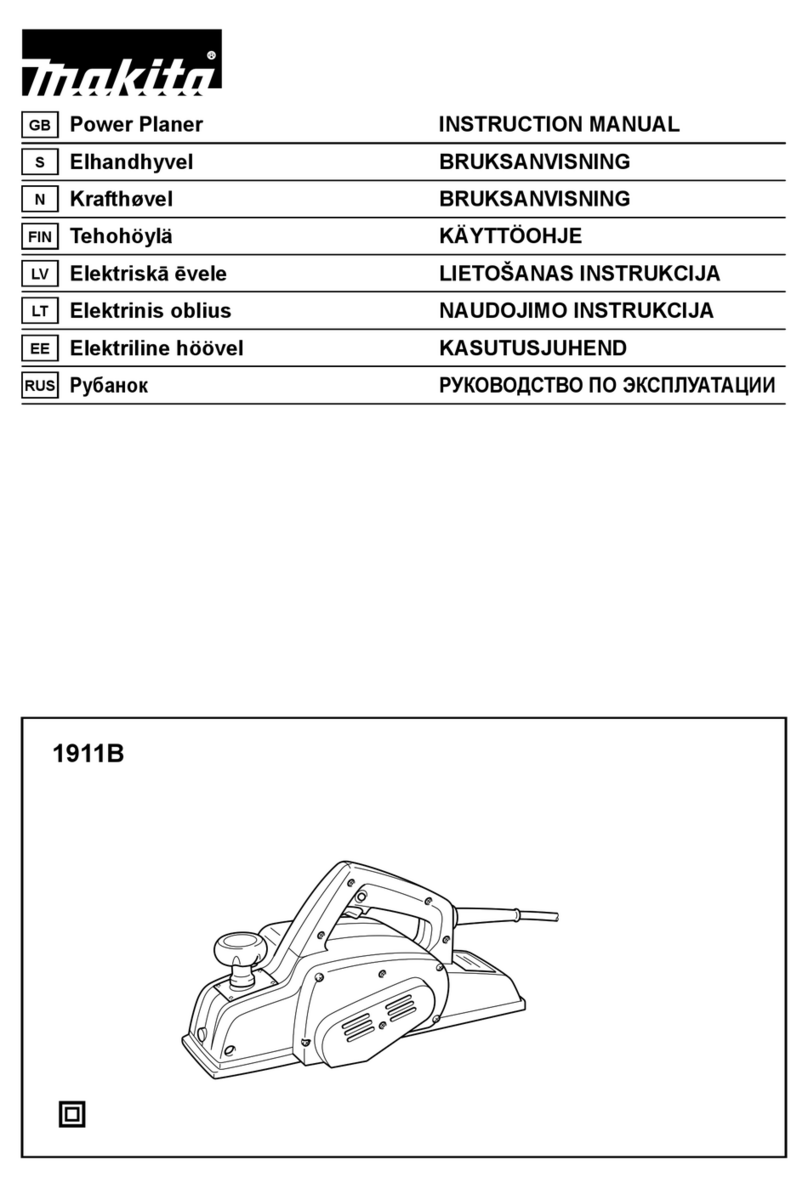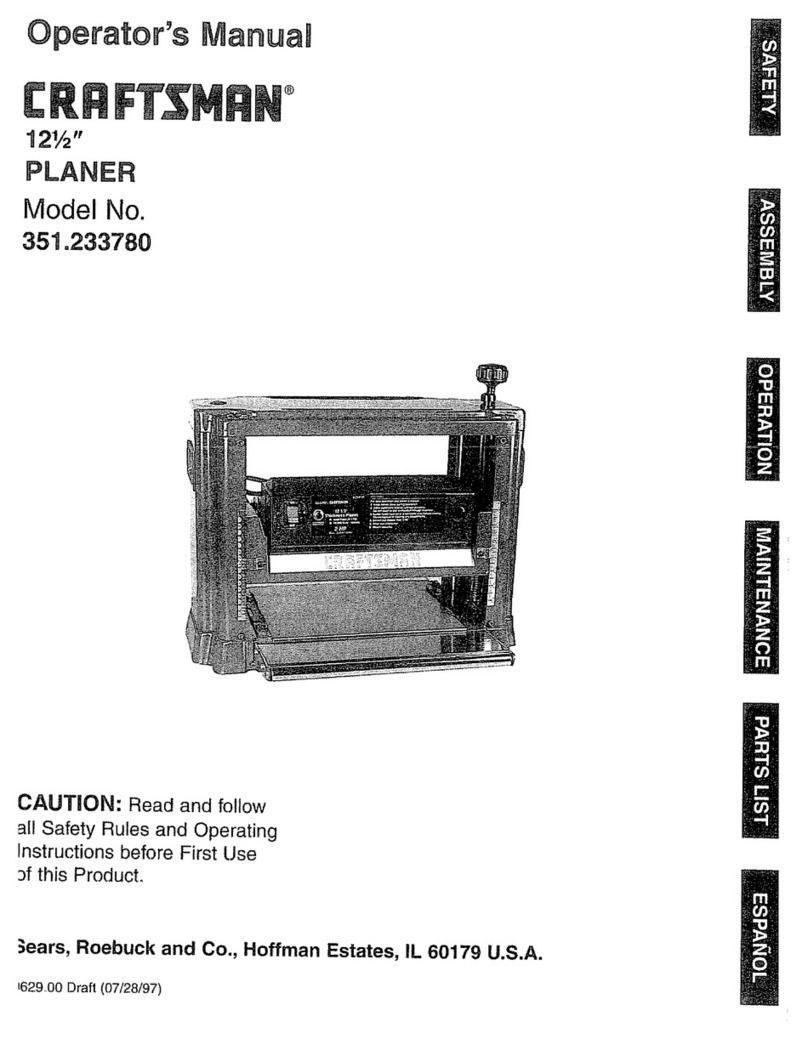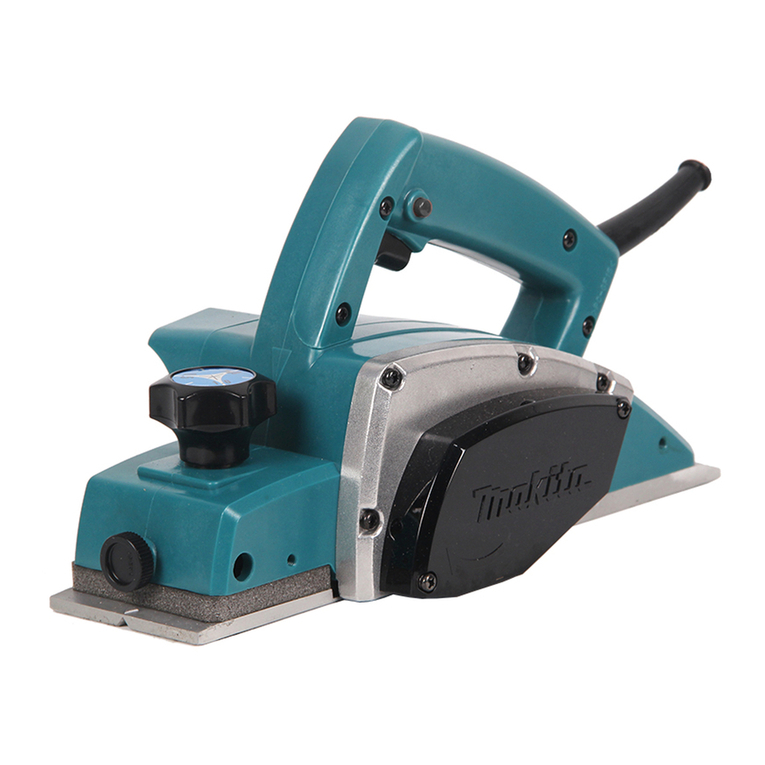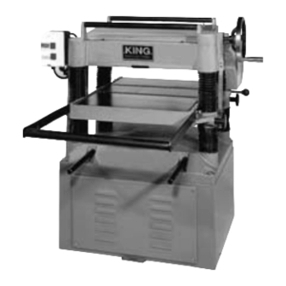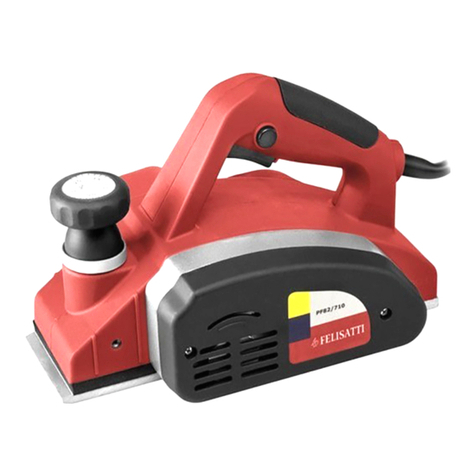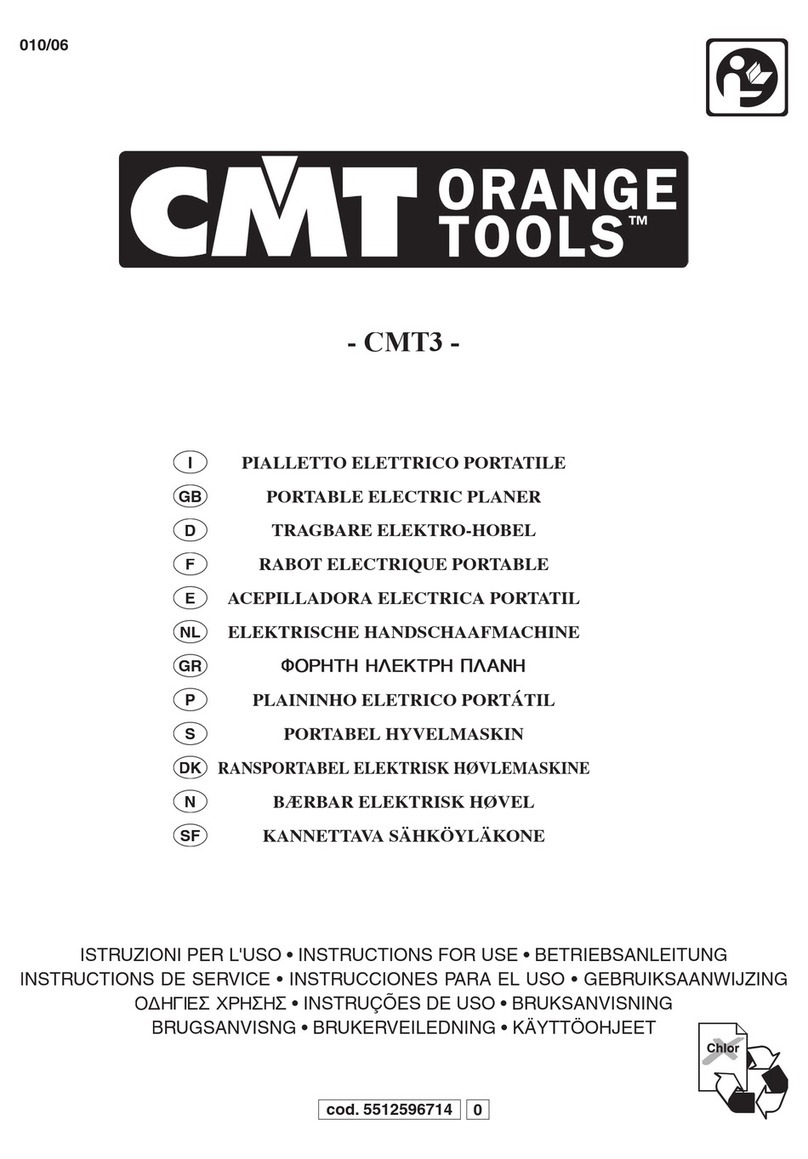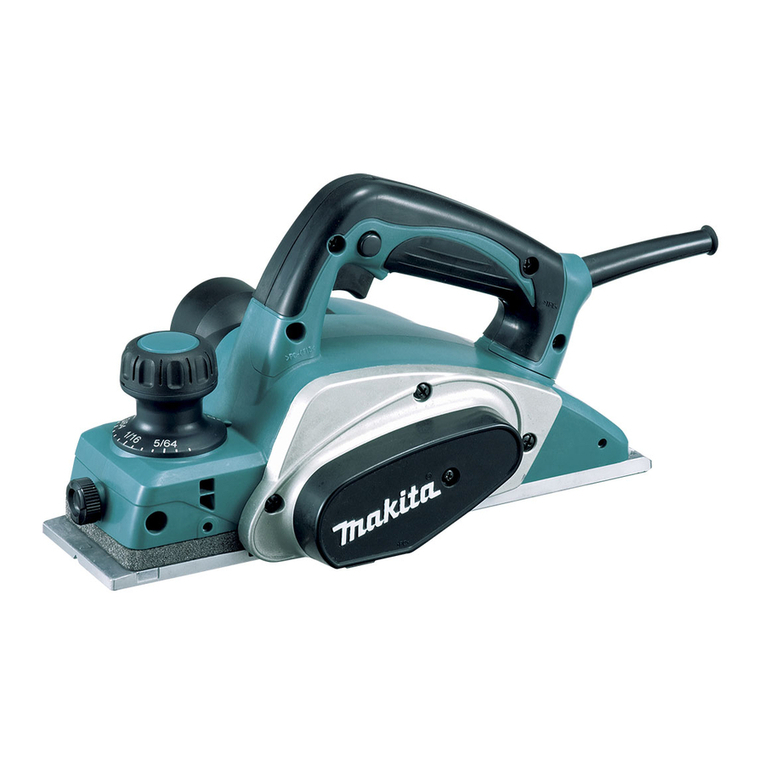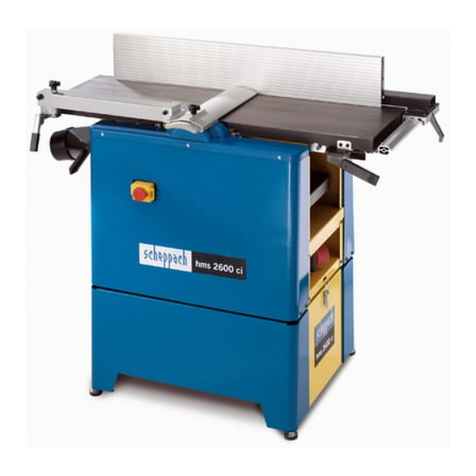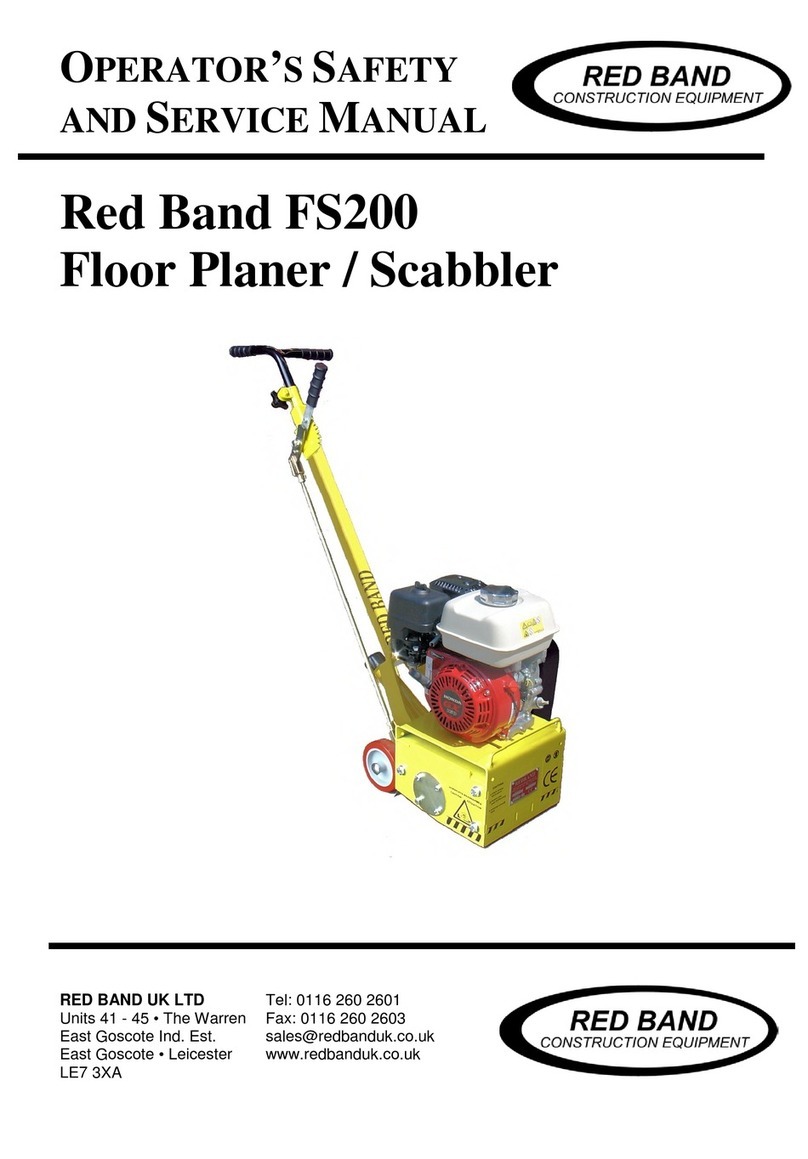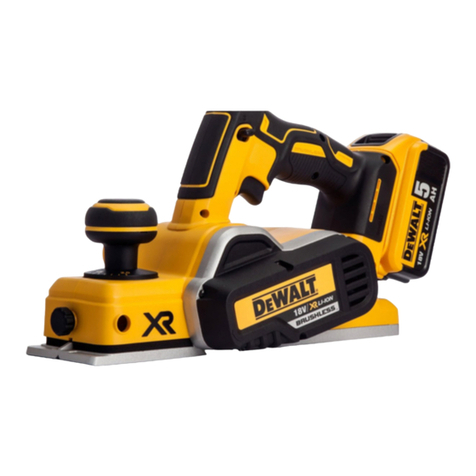Woods ALITEC CP16BH User manual

OPERATOR'S MANUAL
MCPBH-B
BACKHOE
COLD PLANER
CP16BH
CP18BH
CP24BH
Effective Serial Numbers:
CP18BH 220130900
CP24BH 200101596
Rev. 7/4/2008
Tested. Proven. Unbeatable.

2 Introduction
Gen’l (Rev. 2/19/2008)
TO THE DEALER:
Assembly and proper installation of this product is the responsibility of the Woods®dealer. Read manual instructions
and safety rules. Make sure all items on the Dealer’s Pre-Delivery and Delivery Check Lists in the Operator’s Manual
are completed before releasing equipment to the owner.
The dealer must complete the Product Registration online at the Woods Dealer Website or complete the mail-in
form included with the Operator’s Manual. If using the mail-in form, the dealer is to return the prepaid postage portion to
Woods, give one copy to the customer, and retain one copy. Failure to register the product does not diminish
customer’s warranty rights.
TO THE OWNER:
Read this manual before operating your Woods equipment. The information presented will prepare you to do a better and
safer job. Keep this manual handy for ready reference. Require all operators to read this manual carefully and become
acquainted with all adjustment and operating procedures before attempting to operate. Replacement manuals can be
obtained from your dealer. To locate your nearest dealer, check the Dealer Locator at www.WoodsEquipment.com, or in
the United States and Canada call 1-800-319-6637.
The equipment you have purchased has been carefully engineered and manufactured to provide dependable and
satisfactory use. Like all mechanical products, it will require cleaning and upkeep. Lubricate the unit as specified.
Observe all safety information in this manual and safety decals on the equipment.
For service, your authorized Woods dealer has trained mechanics, genuine Woods service parts, and the necessary
tools and equipment to handle all your needs.
Use only genuine Woods service parts. Substitute parts will void the warranty and may not meet standards required for
safe and satisfactory operation. Record the model number and serial number of your equipment in the spaces
provided:
Model:_______________________________ Date of Purchase: _____________________
Serial Number: (see Safety Decal section for location) ____________________________________
Provide this information to your dealer to obtain correct repair parts.
Throughout this manual, the term NOTICE is used to indicate that failure to observe can cause damage to equipment.
The terms CAUTION, WARNING, and DANGER are used in conjunction with the Safety-Alert Symbol (a triangle with
an exclamation mark) to indicate the degree of hazard for items of personal safety.

Introduction 3
MCPBH-B (Rev. 4/20/2007)
TABLE OF CONTENTS
INTRODUCTION. . . . . . . . . . . . . . . . . . . . . . . . . . . . . . . . . . . . . . . . . . . . . . .2
GENERAL INFORMATION . . . . . . . . . . . . . . . . . . . . . . . . . . . . . . . . . . . . . . .4
SPECIFICATIONS. . . . . . . . . . . . . . . . . . . . . . . . . . . . . . . . . . . . . . . . . . . . . .4
SAFETY RULES . . . . . . . . . . . . . . . . . . . . . . . . . . . . . . . . . . . . . . . . . . . . . . .5
SAFETY DECALS. . . . . . . . . . . . . . . . . . . . . . . . . . . . . . . . . . . . . . . . . . . . . .8
OPERATION . . . . . . . . . . . . . . . . . . . . . . . . . . . . . . . . . . . . . . . . . . . . . . . . . .9
TROUBLE SHOOTING . . . . . . . . . . . . . . . . . . . . . . . . . . . . . . . . . . . . . . . . .11
SERVICE. . . . . . . . . . . . . . . . . . . . . . . . . . . . . . . . . . . . . . . . . . . . . . . . . . . .12
ASSEMBLIES & PARTS LISTS. . . . . . . . . . . . . . . . . . . . . . . . . . . . . . . . . . .18
FITTING TORQUE CHART. . . . . . . . . . . . . . . . . . . . . . . . . . . . . . . . . . . . . .22
BOLT TORQUE CHART . . . . . . . . . . . . . . . . . . . . . . . . . . . . . . . . . . . . . . . .23
PRODUCT WARRANTY. . . . . . . . . . . . . . . . . . . . . . . INSIDE BACK COVER
REPLACEMENT PARTS WARRANTY . . . . . . . . . . . . . . . . . . BACK COVER
Si no lee Ingles, pida ayuda a
alguien que si lo lea para que le
traduzca las medidas de seguridad.
LEA EL INSTRUCTIVO!
!
This Operator’s Manual should be regarded as part of the machine.
Suppliers of both new and second-hand machines must make sure
that this manual is provided with the machine.

4 Introduction
MCPBH-B (Rev. 4/20/2007)
GENERAL INFORMATION
SPECIFICATIONS
CP16BH CP18BH CP24BH
Planing Width 16 inches 18 inches 24 inches
Planing Depth 0-6 inches 0-6 inches 0-6 inches
Hydraulic Horsepower Required 30-60 hp 30-60 hp 30-60 hp
Number of Carbide Picks 50 56 70
Hydraulic Flow Required 25-40 gpm 25-40 gpm 25-40 gpm
Hydraulic Pressure Required 2000-3500 psi 2000-3500 psi 2000-3500 psi
Operating Weight 900 lbs 1100 lbs 1380 lbs
Planetary Gearbox Capacity 31 oz 31 oz 31 oz
Planetary Lubricant 80W-90 GL5 or
EP90 80W-90 GL5 or
EP90 80W-90 GL5 or
EP90
The purpose of this manual is to assist you in operating
and maintaining your backhoe cold planer. Read it care-
fully. It furnishes information and instructions that will
help you achieve years of dependable performance.
These instructions have been compiled from extensive
field experience and engineering data. Some informa-
tion may be general in nature due to unknown and vary-
ing operating conditions. However, through experience
and these instructions, you should be able to develop
procedures suitable to your particular situation.
The illustrations and data used in this manual were cur-
rent at the time of printing but, due to possible inline
production changes, your machine may vary slightly in
detail. We reserve the right to redesign and change the
machines as may be necessary without notification.
Throughout this manual, references are made to right
and left directions. These are determined by standing
behind the equipment facing the direction of forward
travel. Drum rotation is counterclockwise as viewed
from the right side of the cold planer.

SAFETY 5
Alitec BHT CP (Rev. 4/20/2007)
INSTALLATION
Hydraulics must be connected as instructed in
this manual. Do not substitute parts, modify, or
connect in any other way.
After connecting hoses, check that all control
lever positions function as instructed in the Opera-
tor's Manual. Do not put into service until control
lever and equipment movements are correct.
TRAINING
Safety instructions are important! Read all
attachment and power unit manuals; follow all
safety rules and safety decal information. (Replace-
ment manuals are available from dealer or, in the
United States and Canada, call 1-800-790-0557.)
Failure to follow instructions or safety rules can
result in serious injury or death.
If you do not understand any part of this manual
and need assistance, see your dealer.
Know your controls and how to stop engine and
attachment quickly in an emergency.
Operators must be instructed in and be capable
of the safe operation of the equipment, its attach-
ments, and all controls. Do not allow anyone to
operate this equipment without proper instruc-
tions.
Keep hands and body away from pressurized
lines. Use paper or cardboard, not hands or other
body parts to check for leaks. Wear safety goggles.
Hydraulic fluid under pressure can easily penetrate
skin and will cause serious injury or death.
Make sure that all operating and service person-
nel know that if hydraulic fluid penetrates skin, it
must be surgically removed as soon as possible by
a doctor familiar with this form of injury or gan-
grene, serious injury, or death will result. CON-
TACT A PHYSICIAN IMMEDIATELY IF FLUID
ENTERS SKIN OR EYES. DO NOT DELAY.
Never allow children or untrained persons to
operate equipment.
PREPARATION
Check that all hardware is properly installed.
Always tighten to torque chart specifications
unless instructed otherwise in this manual.
Counterweight ballast may be required for
machine stability. Check your power unit manual or
contact your dealer.
Air in hydraulic systems can cause erratic oper-
ation and allows loads or equipment components
to drop unexpectedly. When connecting equipment
or hoses or performing any hydraulic maintenance,
purge any air in hydraulic system by operating all
hydraulic functions several times. Do this before
putting into service or allowing anyone to
approach the equipment.
After connecting hoses, check that all control
lever positions function as instructed in the Opera-
tor's Manual. Do not put into service until control
lever and equipment movements are correct.
Protective hose sleeves must cover all hydrau-
lic hoses and be secured onto metal hose fittings.
Replace hoses or sleeves if damaged or if protec-
tive sleeve cannot be properly positioned or
secured.
Make sure all hydraulic hoses, fittings, and
valves are in good condition and not leaking before
starting power unit or using equipment. Check and
route hoses carefully to prevent damage. Hoses
must not be twisted, bent sharply, kinked, frayed,
pinched, or come into contact with any moving
parts. Operate moveable components through full
operational range to check clearances. Replace
any damaged hoses immediately.
Always wear relatively tight and belted clothing
to avoid entanglement in moving parts. Wear
sturdy, rough-soled work shoes and protective
equipment for eyes, hair, hands, hearing, and head.
(Safety Rules continued on next page)
Safety is a primary concern in the design and
manufacture of our products. Unfortunately, our
efforts to provide safe equipment can be wiped
out by an operator’s single careless act.
In addition to the design and configuration of
equipment, hazard control and accident preven-
tion are dependent upon the awareness, concern,
judgement, and proper training of personnel
involved in the operation, transport, maintenance
and storage of equipment.
It has been said “The best safety device is an
informed, careful operator.” We ask you to be that
kind of operator.
SAFETY RULES
ATTENTION! BECOME ALERT! YOUR SAFETY IS INVOLVED!

6 SAFETY
Alitec BHT CP (Rev. 4/20/2007)
(Safety Rules continued from previous page)
Be sure attachment is properly secured,
adjusted, and in good operating condition. Coupler
lockpins must be fully extended and properly
engaged into attachment retaining slots.
Power unit must be equipped with ROPS and
seat belt/operator restraint. Keep seat belt/operator
restraint securely fastened/engaged. Falling off
power unit can result in death from being run over
or crushed. Keep ROPS systems in place at all
times.
Make sure all safety decals are installed.
Replace if damaged. (See Safety Decals section for
location.)
Make sure shields and guards are properly
installed and in good condition. Replace if dam-
aged.
Inspect and clear area of stones, branches, or
other hard objects that might be thrown, causing
injury or damage.
OPERATION
Improper operation can cause the machine to
tip or roll over and cause injury or death.
• Keep power unit lift arms and attachment as
low as possible.
• Do not travel or turn with power unit lift arms
and attachment raised.
• Turn only on level ground.
• Go up and down slopes, not across them.
• Keep the heavy end of the machine uphill.
• Do not overload the machine.
Never use attachment to carry loads that exceed
the rated operating capacity or other specifications
of the power unit. Check your power unit manual or
see your dealer for rated operating capacity.
Exceeding this capacity can cause machine to tip,
roll over, or present other hazards that can cause
injury or death.
Do not allow bystanders in the area when oper-
ating, attaching, removing, assembling, or servic-
ing equipment.
Contact with high voltage, overhead power
lines, underground cables, gas lines, and other
hazards can cause serious injury or death from
electrocution, explosion, or fire.
Keep bystanders away from equipment.
Never direct discharge toward people, animals,
or property.
Do not operate equipment while under the influ-
ence of alcohol or drugs.
Operate only in daylight or good artificial light.
Keep hands, feet, hair, and clothing away from
equipment while engine is running. Stay clear of all
moving parts.
Always comply with all state and local lighting
and marking requirements.
Do not allow riders. Do not lift or carry anybody
on the power unit or attachments.
Always sit in power unit seat when operating
controls or starting engine. Securely fasten seat
belt/operator restraint, place transmission in park
or neutral, engage brake and ensure all other con-
trols are disengaged before starting power unit
engine.
Look down and to the rear and make sure area
is clear before operating in reverse.
Use extreme care when working close to fences,
ditches, other obstructions, or on hillsides.
Do not operate on steep slopes.
Do not stop, start, or change directions sud-
denly on slopes.
Use extreme care and reduce ground speed on
slopes and rough terrain.
Watch for hidden hazards on the terrain during
operation.
Stop power unit and implement immediately
upon striking an obstruction. Dismount power unit,
using proper procedure. Inspect and repair any
damage before resuming operation.
NEVER GO UNDERNEATH EQUIPMENT. Never
place any part of the body underneath equipment
or between moveable parts even when the engine
has been turned off. Hydraulic system leak down,
hydraulic system failures, mechanical failures, or
movement of control levers can cause equipment
to drop or rotate unexpectedly and cause severe
injury or death.
• Service work does not require going under-
neath.
• Read Operator's Manual for service instruc-
tions or have service performed by a qualified
dealer.
(Safety Rules continued on next page)
SAFETY RULES
ATTENTION! BECOME ALERT! YOUR SAFETY IS INVOLVED!

SAFETY 7
Alitec BHT CP (Rev. 4/20/2007)
(Safety Rules continued from previous page)
Leak down or failure of mechanical or hydraulic
system can cause equipment to drop.
Before making any adjustments on attachment,
stop engine and engage parking brake. Never
adjust or work on attachment while the power unit
or attachment is running.
Before leaving operator's seat, follow power
unit manual instructions. Lower lift arms and put
attachment on the ground. Stop engine, remove
key, engage brake, and remove seat belt/operator
restraint.
MAINTENANCE
Before leaving operator's seat, follow power
unit manual instructions. Lower lift arms and put
attachment on the ground. Stop engine, remove
key, engage brake, and remove seat belt/operator
restraint.
NEVER GO UNDERNEATH EQUIPMENT. Never
place any part of the body underneath equipment
or between moveable parts even when the engine
has been turned off. Hydraulic system leak down,
hydraulic system failures, mechanical failures, or
movement of control levers can cause equipment
to drop or rotate unexpectedly and cause severe
injury or death.
• Service work does not require going under-
neath.
• Read Operator's Manual for service instruc-
tions or have service performed by a qualified
dealer.
Do not modify or alter or permit anyone else to
modify or alter the equipment or any of its compo-
nents in any way.
Your dealer can supply original equipment
hydraulic accessories and repair parts. Substitute
parts may not meet original equipment specifica-
tions and may be dangerous.
When removing front wheel pins, be sure to
support the front of the depth skid to prevent
hands or feet from being crushed.
When removing the flag pins, be sure to support
the depth arm to prevent hands and feet from being
crushed.
Always wear relatively tight and belted clothing
to avoid entanglement in moving parts. Wear
sturdy, rough-soled work shoes and protective
equipment for eyes, hair, hands, hearing, and head.
Do not allow bystanders in the area when oper-
ating, attaching, removing, assembling, or servic-
ing equipment.
Be sure attachment is properly secured,
adjusted, and in good operating condition. Coupler
lockpins must be fully extended and properly
engaged into attachment retaining slots.
Never perform service or maintenance with
engine running.
Keep all persons away from operator control
area while performing adjustments, service, or
maintenance.
Tighten all bolts, nuts and screws to torque
chart specifications. Check that all cotter pins are
installed securely to ensure equipment is in a safe
condition before putting unit into service.
Make sure all safety decals are installed.
Replace if damaged. (See Safety Decals section for
location.)
Make sure shields and guards are properly
installed and in good condition. Replace if dam-
aged.
Do not disconnect hydraulic lines until all sys-
tem pressure is relieved. Lower unit to ground,
stop engine, and operate all hydraulic control
levers.
Leak down or failure of mechanical or hydraulic
system can cause equipment to drop.
STORAGE
Follow manual instructions for storage.
Keep children and bystanders away from stor-
age area.
SAFETY RULES
ATTENTION! BECOME ALERT! YOUR SAFETY IS INVOLVED!

8 Safety
MCPBH-B (Rev. 4/20/2007)
SAFETY & INSTRUCTIONAL DECALS
ATTENTION! BECOME ALERT! YOUR SAFETY IS INVOLVED!
Replace Immediately If Damaged!
WARNING
FLYING OBJECT
HAZARD
Keep clear during
operation.
D0195
WARNING
FLYING OBJECT
HAZARD
Keep clear during
operation.
D0195
WARNING
ROTATING CUTTER
Keep clear during operation.
See Operator's Manual
for maintenance precautions.
D0193
6 - D0195
8 - SERIAL NUMBER PLATE
4 - D0193
5 - D0404
9 - 19924
HIGH-PRESSURE HYDRAULIC OIL LEAKS CAN PENETRATE SKIN
RESULTING IN SERIOUS INJURY, GANGRENE OR DEATH.
n
Check for leaks with cardboard; never use hand.
n
Before loosening fittings: lower load, release pressure, and
be sure oil is cool.
n
Consult physician immediately if skin penetration occurs.
WARNING
19924-B
MODEL NO. SERIAL NO.
Woods Equipment Company
Oregon, Illinois, U.S.A.
TO AVOID SERIOUS INJURY OR DEATH:
Read attachment and power unit manuals before you use,
service, or repair machine. Follow all safety rules and
instructions. (Manuals can be obtained from your dealer, or
in the United States and Canada call 1-800-319-6637.)
Use only when sitting in operator's seat with seat belt/
operator restraint fastened.
Before leaving operator's seat, follow power unit manual
instructions, lower lift arms and attachment to ground, stop
engine, remove key, engage brake, and remove seat belt/
operator restraint.
Never let children or untrained persons run equipment.
WARNING
D0404-C
BE CAREFUL!
Use a clean, damp cloth to clean safety
decals.
Avoid spraying too close to decals when
using a pressure washer; high-pressure
water can enter through very small
scratches or under edges of decals
causing them to peel or come off.
Replacement safety decals can be
ordered free from your Woods dealer.
To locate your nearest dealer, check the
Dealer Locator at
www.WoodsEquipment.com, or in the
United States and Canada call 1-800-
319-6637.

Operation 9
MCPBH-B (Rev. 4/20/2007)
OPERATION
Safety instructions are important! Read all
attachment and power unit manuals; follow all
safety rules and safety decal information. (Replace-
ment manuals and safety decals are available from
your dealer.) Failure to follow instructions or safety
rules can result in serious injury or death.
Power unit must be equipped with ROPS and
seat belt/operator restraint. Keep seat belt/operator
restraint securely fastened/engaged. Falling off
power unit can result in death from being run over
or crushed. Keep ROPS systems in place at all
times.
Operators must be instructed in and be capable
of the safe operation of the equipment, its attach-
ments, and all controls. Do not allow anyone to
operate this equipment without proper instructions.
NOTICE
■ Backhoes must be equipped with an auxiliary
hydraulic system capable of supplying continuous
flow for hydraulic motor operation.
PRE-OPERATION CHECK LIST
(Owner’s Responsibility)
___ Review and follow all safety rules and safety
decal instructions on page 5 through page 8.
___ Check that all safety decals are installed and in
good condition. Replace if damaged.
___ Check that all shields and guards are properly
installed and in good condition. Replace if
damaged.
___ Check that equipment is properly and securely
attached to power unit.
___ Check that all hardware and cotter pins are
properly installed and secured.
___ Do not allow riders.
___ Keep all bystanders away from equipment
working area.
___ Check all lubrication points and grease as
instructed in Lubrication Points‚ page 16.
___ Check that all hydraulic hoses and fittings are
in good condition and not leaking before start-
ing power unit.
___ Check that hoses are not twisted, bent sharply,
kinked, frayed or pulled tight. Replace any
damaged hoses immediately.
___ Make sure power unit ROPS and seat belt are
in good condition. Keep seat belt securely fas-
tened during operation.
Routing Hydraulic Hoses
NOTE: The planer is shipped without hoses. The
customer must supply and install hoses prior to
operation.
1. Remove the caps from the motor fittings (1, 2, 3) as
shown in Figure 1.
2. Attach the casedrain hose to the fitting on the
motor (1).
3. Attach the return hose to the fitting on the motor
(2).
4. Attach the pressure hose to the fitting on the motor
(3).
NOTICE
■ Casedrain must be routed directly back to the
reservoir. Excess case pressure over 50 psi in
motor will result in motor failure.
Figure 1.
Do not allow bystanders in the area when oper-
ating, attaching, removing, assembling, or servic-
ing equipment.
WARNING
DP2
AWARNING

10 Operation
MCPBH-B (Rev. 4/20/2007)
Operating Planer
1. Adjust the planer to desired cutting depth by
adjusting the depth jack (1) as shown in Figure 2.
2. Position the host machine so that it is parallel to the
surface being planed.
3. Begin with the planer drum slightly off the ground
and the planer close to the host machine.
4. Activate the auxiliary hydraulics and slowly lower
the planer until the drum contacts the ground.
NOTE: For proper planing, the secondary bucket
pin should be removed to allow the planer to swing
freely about the primary bucket pin.
5. Slowly lower the planer until all four planer wheels
are on the ground. If the drum stalls, raise the
planer until the drum begins turning, then lower the
planer again.
6. When the planer is fully lowered, begin moving the
planer away from the host machine, so that the
drum is cutting on the upstroke. Plane at a rate to
prevent the drum from stalling. If the planer stalls,
raise planer out of the cut to allow the drum to
begin turning and continue planing.
NOTE: For optimal cutting and reduced vibration,
maintain down pressure on the planer with all four
wheels on the ground while cutting.
Figure 2.
NOTICE
■ Keep the planer drum close to the ground.
Avoid swinging the boom from side to side while
planing as this may produce excessive drum wear
or planetary failure.
Attaching The Planer To A Backhoe
1. Position the planer as shown in Figure 3.
2. Move the dipper stick so the primary pin bore on
the dipper stick is aligned with the primary pin bore
(1) on the planer.
3. Insert and secure the primary pin.
4. Activate the curl function until the curl pin bore is
aligned with the curl pin bore (2) on the planer.
5. Insert and secure the curl pin.
Figure 3.
NOTICE
■ Do not overcurl attachment. Overcurling may
cause damage to hose, machine, or attachment.

Troubleshooting 11
MCPBH-B (Rev. 4/20/2007)
TROUBLESHOOTING
PROBLEM POSSIBLE CAUSE SOLUTION
Bucket function adjustment is
required to control the planer
attitude.
Both primary and secondary
bucket pins are installed between
the planer and backhoe boom.
Remove the secondary bucket pin
while planing to allow the planer to
freely swing about the primary pin.
No boom motion is available
when the planer is engaged. Some hammer kits do not provide
a minimum flow at all times to the
boom when kit is engaged.
Install a priority flow divider
between the loader valve and kit
control valve (consult the planer
manufacturer).
In addition, when using the
extendahoe for planer power and
no load is present on the drum, all
the backhoe flow will go through
the planer.
Slightly disengage the extenda-
hoe function to allow pressure to
develop for boom motion.
Motor shaft seal leaks hydraulic
fluid. The casedrain line is blocked or
crimped, creating more than 25 psi
at the drive motor case.
NOTE: Shaft seal failure may fill
planetary gearbox with the hydrau-
lic oil and may fail the planetary
seal. Change the planetary oil and
inspect for seal leakage if the
motor seal failure occurs.
Check the casedrain line from the
planer back to the hydraulic tank to
ensure that no more than 25 psi is
at the planer. Replace the shaft
shield.
Gear lube (90W) leak at the
planetary shaft. Main planetary seal failure. Replace the planetary seal.
The cold planer chatters while
milling and does not cut to the
desired depth.
Insufficient down pressure applied
through the backhoe boom. Using the boom and dipper func-
tions, always apply enough down
pressure to maintain all the planer
needs on the pavement.

12 Service
MCPBH-B (Rev. 4/20/2007)
SERVICE
Drum Removal
1. Support the planer with a hoist so the drum just
touches the ground.
2. Remove three deadshaft bolts (1) as shown in
Figure 4. The top bolt has a weld nut on the inside,
so it is unnecessary to hold this nut with a wrench.
Figure 4.
3. Remove four planetary bolts (2) as shown in Figure
5.
4. Slide the deadshaft out of the chassis (3) as shown
in Figure 4.
Figure 5.
5. Raise the planer and slide the drum outward as
shown in Figure 6.
6. Turn the drum on its side (bearing side down).
Figure 6.
7. Remove nine nuts (4) that secure the planetary /
motor assembly (5) as shown in Figure 7.
NOTE: The studs may back out of the drum when
attempting to remove these nuts. This is common
and will not affect the operation of the planer upon
reassembly.
8. Lift out the planetary / motor assembly.
Figure 7.
9. Turn the drum over. Remove four nuts (6) that
secure bearing (7) to the drum as shown in Figure
8. The studs may back out of the drum when
attempting to remove these nuts. This is common
and will not affect the operation of the planer upon
reassembly.

Service 13
MCPBH-B (Rev. 4/20/2007)
Figure 8.
Planetary Removal
1. Remove two motor bolts (1). Remove the motor
from the planetary as shown in Figure 9.
2. Perform Steps 1 through 8 of Drum Removal
instructions, page 12.
Figure 9.
Planetary Installation
1. Perform Steps 2 through 7 of Drum Installation
instructions, page 13.
2. Insert the motor into the planetary (1) as shown in
Figure 10. Install two 1/2" –13 bolts (2), two 1/2"
lock washers (3), and two 1/2" flat washers (4).
3. Torque to 90 lbs-ft. (122 N-m).
Figure 10.
Motor Removal
1. Remove and plug the pressure, return and case-
drain hoses.
2. Remove two motor bolts (1) as shown in Figure 9.
Remove the motor from planetary.
Motor Installation
1. Insert the motor into planetary (1) as shown in
Figure 10. Install two 1/2" –13 bolts (2), two 1/2"
lock washers (3), and two 1/2" flat washers (4).
2. Torque to 90 lbs-ft. (122 N-m).
3. Install the pressure (A), return (B), and casedrain
(C) hoses.
Drum Installation
1. Install the bearing (1) to the drum (2) as shown in
Figure 11.
2. Install four 1/2" –20 nuts (4) and four 1/2" flat
washers (5). Torque nuts to 90 lbs-ft. (122 N-m).
3. Grease the bearing (3).

14 Service
MCPBH-B (Rev. 4/20/2007)
Figure 11.
4. Turn the drum over as shown in Figure 12. Install
the planetary / motor assembly (8).
5. Install nine 9/16" –18 nuts (6) and nine 9/16" flat
washers (7).
6. Torque nuts to 118 lbs-ft. (160 N-m).
Figure 12.
7. Raise the planer to allow clearance to slide the
drum assembly under the planer as shown in
Figure 13.
8. Lower the planer.
Figure 13.
9. Apply a thin coat of anti-seize grease to a portion of
deadshaft (9) that is inserted into the bearing as
shown in Figure 14.
Figure 14.
10. Insert the deadshaft through the chassis side plate
and into the drum bearing as shown in Figure 15.
11. Install three 5/8" –11 bolts (10), five 5/8" flat
washers (11), and two 5/8" –11 lock nuts (12)
through deadshaft. Do not tighten.
NOTE: The top deadshaft bolt has a weld nut on
the inside of the chassis and does not require a
washer or nut on the inside of the chassis.

Service 15
MCPBH-B (Rev. 4/20/2007)
Figure 15.
12. Install four 5/8" –11 bolts (13) and four 5/8" flat
washers (14) through the side plate and into the
planetary as shown in Figure 16.
13. Torque the deadshaft bolts to 220 lbs-ft. (229 N-m).
Figure 16.
Depth Skid Removal
1. Support the planer with a hoist so that there is no
weight on the depth arm (1) as shown in Figure 17.
2. Remove the lower depth jack pin (2)
3. Remove two 1/2" bolts (3) from the flag pins (6).
4. Remove two flag pins (6).
Figure 17.
Depth Skid Installation
1. Install two flag pins (6) as shown in Figure 17.
2. Install one 1/2" –13 bolt (3), one 1/2" flat washer
(4), and one 1/2" –13 lock nut (5) for each flag pin.
Torque to 90 lbs-ft. (122 N-m).
3. Grease the flag pin (7).
4. Install the lower depth jack pin (2).
When removing the flag pins, be sure to support
the depth arm to prevent hands and feet from being
crushed.
Depth Jack Removal
1. Support the planer with a hoist so there is no
weight on the depth arm (1) as shown in Figure 18.
2. Remove the depth jack pins (2 and 3).
ACAUTION

16 Service
MCPBH-B (Rev. 4/20/2007)
Figure 18.
Depth Jack Removal
1. Support the planer with a hoist so there is no
weight on the depth arm (1) as shown in Figure 18.
2. Remove the depth jack pins (2 and 3).
Depth Jack Installation
1. Support the planer with a hoist so there is no
weight on the depth arm (1) as shown in Figure 18.
2. Install the depth jack pins (2) and (3).
Pick Removal
1. Insert the pick removal tool (1) into the slot on the
pick (2) as shown in Figure 19.
2. Hit the pick removal tool on the round protrusion to
drive the pick out (3).
Figure 19.
Always wear relatively tight and belted clothing
to avoid getting caught in moving parts. Wear
sturdy, rough-soled work shoes and protective
equipment for eyes, hair, hands, hearing, and head;
and respirator or filter mask where appropriate.
Pick Installation
1. Insert the pick tool (1) into the slot on the pick (2)
as shown in Figure 20.
2. Drive the pick into the holder by striking the tool on
the circular protrusion (3).
NOTICE
■ DO NOT INSTALL PICK BY HITTING THE POINT
OF THE PICK as this may cause damage to the pick
and premature failure.
Figure 20.
LUBRICATION
Lubrication Points
All grease points should be serviced after 40 hours of
operation.
• Front and rear wheels (1)
• Flag pin (2)
• Deadshaft bearing (3) as shown in Figure 20.
NOTICE
■ Planetary gearbox lubricant must be changed
after the first 50 hours of operation and every year
or 1000 hours of operation, thereafter, whichever
occurs first. Use only API 80W90 GL5 gear oil.
AWARNING

Service 17
MCPBH-B (Rev. 4/20/2007)
Deadshaft Bearing Lubrication
To grease deadshaft bearing, set planer to zero depth
and rotate drum until grease zerk (3) is facing down as
shown in Figure 21.
Figure 21.
TRANSPORTING
Install the secondary bucket pin prior to transport.
Raise planer off the ground and curl the planer inward.
Avoid excessive ground speed and sudden maneu-
vers.
NOTICE
■ When transporting the planer, make sure the
drum does not contact the ground as this may
cause the drum to turn resulting in damage to the
motor.
STORAGE
NOTICE
■ The planer is shipped without hoses. The plan-
etary must always be secured with quick discon-
nects or caps to prevent loss of fluids.
■ Keep children and bystanders away from stor-
age area.
WARNING

18 Parts
MCPBH-B (Rev. 4/20/2007)
DRUM ASSEMBLY
REF PART QTY DESCRIPTION
1 1024801 50 Pick, Asphalt -or-
1 B1050C 50 Pick, Concrete
2 102670416 1 16"Drum assembly w/ picks -or-
2 102670418 1 18" Drum assembly w/ picks -or-
2 102670424 1 24" Drum assembly w/ picks
3 104248 9 Stud, 9/16 - 12 x 9/16 - 18 x 3.00
4 104247 4 Stud, 1/2 - 13 x 1/2 - 20 x 2.50
5 1024802 * 1 Pick removal tool (for 1024801)
6 M0007 * 1 Pick removal tool (for B1050A,
B1050S, B1050C)
* Item not shown
REF PART QTY DESCRIPTION
(Rev. 7/4/2008)

Parts 19
MCPBH-B (Rev. 4/20/2007)
ATTACH WELD NH LB75 105893
ATTACH WELD CAT 416C / 416D
NOTE: Attachment brackets are available for other host machines. Please contact your local Woods dealer for details.
REF PART QTY DESCRIPTION
1 S0100902 2 Bushing, CPBH
2 105893 1 Attach weld NH LB75
REF PART QTY DESCRIPTION
1 S0100903 2 Bushing, CPBH CAT
2 S0100902 2 Bushing, CPBH
3 105876 1 Attach weld CAT416C -or-
3 105945 1 Attach weld CAT416D
(Rev. 5/31/2007)

20 Parts
MCPBH-B (Rev. 4/20/2007)
BASE ASSEMBLY
HC412 Motor Shown
REF PART QTY DESCRIPTION
1 100594 4 Wheel assembly
3 101979 1 Deadshaft weldment, Triangle
4 105818 2 Pin, Flag 1.25 x 2.625
5 105867 1 Chassis weldment (CP16)
5 105868 1 Chassis weldment (CP18)
5 105869 1 Chassis weldment (CP24)
6 105882 1 Depth arm weldment (CP16)
6 105883 1 Depth arm weldment (CP18)
6 105884 1 Depth arm weldment (CP24)
7 21666 4 Bolt, 1/2" x 1-1/2" -13 GR8
8 B0815 2 Nut, 1/2" -13 Stover GR5
9 B0816 4 Nut, 1/2" -20 Stover
10 57816 8 Washer, 1/2" Flat SAE
11 855 2 Washer, 1/2" lock
12 B0915 9 Nut, 9/16" -18 GR5 Stover
13 B0920 9 Washer, 9/16" flat SAE
14 59019 4 Bolt, 5/8" x 1-1/2" -11 GR8
15 59001 3 Bolt, 5/8" x 2 -11 GR8
16 B1015 2 Nut, 5/8" -11 Stover GR5
17 B1021 9 Washer, 5/8" flat SAE
18 BB001 1 Bearing, 2.5" FYRP
19 101607716 1 16" Drum assembly with picks
(CP16)
19 101607718 1 18" Drum assembly with picks
(CP18)
19 101607724 1 24" Drum assembly with picks
(CP24)
20 F1051 2 Fitting, 16 OM x 12 FLM ST
(HC412) -or-
20 F1006 2 Fitting, 12 OM x 12 FLM ST
(HC321)
21 F1070 1 Fitting, 8 OM x 6 FLM ST (HC412)
-or-
21 F1016 1 Fitting, 10 OM x 8 FLM ST
(HC321)
22 F1139 1 Plug, 6 OM fitting sockethead
23 F1168 1 Cap, 6 FLF fitting (HC412) -or-
23 F1170 1 Cap, 8 FLF fitting (HC321)
24 F1174 2 Cap, 12 FLF fitting (HC321 &
HC412)
25 HC412 1 Motor, Eaton 35CC -or-
25 HC321 1 Motor, Sundstrand M35
26 HC422 1 Planetary, Auburn 24.85:1
27 M0003 12 Retaining ring, 1" ext
28 M0009 1 Gasket, 2 Bolt B flange SAE
29 M0114 2 Zerk, 1/4" -28
30 P0020 1 Jack assembly, manual CPBH
31 T1013 1 Pin, 1 x 4.88
32 T1018 2 Pin, 1 x 5.625 SR 5.00
33 T1037 2 Pin, 1 x 6.25
34 T1033 1 Pin, 1 x 4.11 SR 3.44
REF PART QTY DESCRIPTION
(Rev. 5/31/2007)
This manual suits for next models
4
Table of contents
Other Woods Planer manuals
